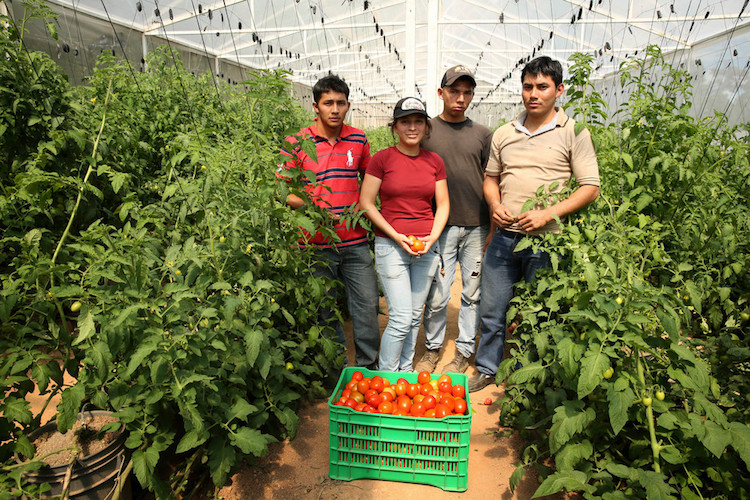
By Ronald Joshua
ROME (IDN) – “Rural areas are failing to provide opportunity and are losing their young people. This has major consequences at the local, national and global level. It can erode national economies, political stability, and food security,” warned Gilbert F. Houngbo, president of the International Fund for Agricultural Development (IFAD) at a recent conference hosted by the African Union Commission, the European Commission and the Estonian Presidency of the EU in Rome, Italy.
The conference on July 2, 2017 focused on Making Sustainable Agriculture a Future for Youth in Africa – against the backdrop that an estimated 440 million young people will enter the rural labour market by 2030 in Africa alone.
The ministerial conference aimed to build up political engagement ahead of the Africa-EU Summit in November 2017 on a common vision on how to generate sustainable, inclusive jobs for African youth in the agri-food sector and rural economy. This vision would support the implementation of the 2030 Agenda for sustainable Development, the Malabo Declaration and the Paris Agreement.
And this against the backdrop that today there are over 1.2 billion young people between the ages of 15 and 24. According to the Rural Youth Employment synthesis paper, published by IFAD and the World Bank, the majority of youth in low and middle-income countries live in rural areas. Youth are two or three times more likely than adults to be unemployed.
If few opportunities are available in rural areas, they are likely to migrate overseas or to urban centres, even though youth unemployment rates are generally higher in urban areas, especially in Sub-Saharan Africa but also in many countries in South Asia, East Asia, Latin America, and the Middle East and North Africa often referred to as the ‘youth bulge’. According to the paper, a thriving rural economy can help address major challenges caused by rural youth unemployment and its direct effects – such as mass migration.
The Rome conference underlined that countries have an urgent choice to make: create employment opportunities, especially in rural areas, and reap the demographic dividends of a young vibrant workforce or face the social unrest and political instability that high rates of youth unemployment may bring about.
The majority of working youth are poor and employed in vulnerable, low quality jobs, in the informal sector. A large share of youth in developing countries live in rural areas, and overall rural populations in low and middle income countries will continue to expand over the next several decades, even with urbanization. Demand for rural labour services will be essential for absorbing these new entrants into the workforce and to help manage the speed of rural to urban transitions.
To raise the demand for labour and services, the paper stresses the importance of supporting rural businesses and “agripreneurs”, making agricultural products more profitable and raising overall productivity.
IFAD’s president summed it up when he said: “A smallholder will not invest in building production if there is no access to markets and no hope of selling a marketable surplus. Similarly, the private sector also will not invest if the risk seems too high. So it is important for governments and development institutions to invest in smallholders, but also to de-risk investment by others.”
The paper highlights the huge potential that rapidly evolving agriculture and food systems have for employing rural youth. The burgeoning demand for food, and a shift in consumption to higher value products, are creating new job opportunities not only in production, but also in distribution, processing and related services. Exploiting this potential is vital given that in sub-Saran Africa alone, over 16 million young people will enter the labour market every year until 2030, mainly in rural areas.
The paper examines the specific challenges young people, and young women in particular, face. These include limited access to vocational training, land and financial services. Efficient land rental markets, and youth-oriented savings and credit schemes, can help address these gaps.
Other recommendations include investing in complementary infrastructure, stimulating private sector investment, and improving the rural business climate and trade by providing incentives and reducing barriers such as local fees and burdensome procedures. Secondary towns, where people leaving agricultural work are much more likely to find jobs than in big cities, can be made more attractive to youth by increasing access to education, health and recreation.
Finally, young people are often excluded from political processes which means their needs are not accounted for. The report warns that unemployment combined with limited participation in policy processes may lead to social and political instability. Conversely, if youth are gainfully employed in productive activities, and their innovative and entrepreneurial potential realised, the “youth bulge” can lead to broad-based economic growth and inclusive development. [IDN-InDepthNews – 12 August 2017]
Photo: A group of young farmers manage their own tomato business in El Salvador. Rapidly evolving agriculture and food systems have a huge potential for creating employment opportunities for rural youth. ©IFAD/Carla Francescutti.
IDN is flagship agency of the International Press Syndicate











